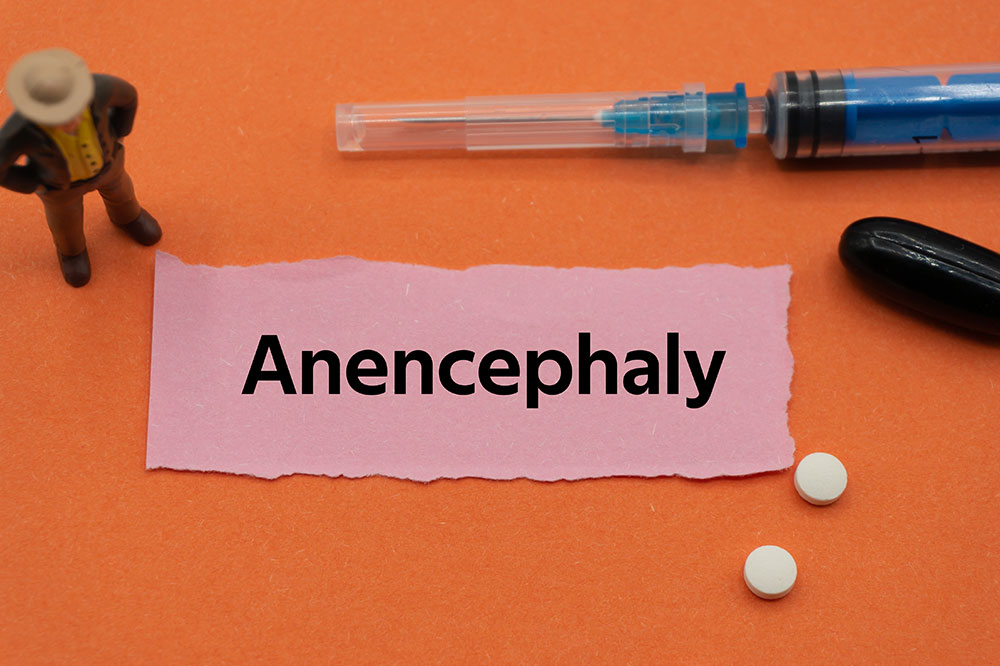
Anencephaly – Symptoms, causes, and more
At birth, a condition known as anencephaly exists. Both the brain and the skull bones have been harmed. The brain is still developing in this state and typically lacks the cerebrum entirely or partially. The cerebrum is the brain region of thought, vision, hearing, touch, and movement. The back of the head is also boneless, and bones may also be missing in the front and sides of the head.
Symptoms
The most prominent symptoms of anencephaly are missing sections of the skull, often the bones at the back of the head. Furthermore, the front or side bones of the skull may be missing or deformed. Also, the brain is misshaped. If the cerebral cortex is sick, a person cannot survive. Other indicators include poor reflexes, a cleft palate, and folded ears. Heart defects are occasionally seen in neonates with anencephaly.
Causes
Throughout pregnancy, the brain and spine begin as a flat plate of cells. When this plate rolls into a tube, the neural tube is created. The tube is fully established within 28 to 32 days of conception. An opening occurs when the neural tube fails to seal entirely or partially. The opening refers to an open neural tube defect. It is possible to leave the tube aperture open. It could also have a skin or bone covering. Anencephaly occurs when the neural tube at the skull’s base cannot seal.
Neural tube anomalies may be caused by environmental factors and genes acquired from both parents. Among these are obesity, the mother’s uncontrolled diabetes, and various prescriptions. Often, a kid with a neural tube anomaly does not have a family history of the condition.
Treatment options
Anencephaly is not curable or treatable. Therefore, it is critical to keep a newborn warm and comfortable. If any scalp pieces are missing, the exposed areas of the brain should be covered. An infant with anencephaly has a few days, if not a few hours, to live.
Is it possible to avoid anencephaly?
Anencephaly cannot be avoided in every case. However, women can minimize their risk by getting enough folic acid before and throughout pregnancy. This is something that meal plans and dietary supplements can help with. For example, the Centers for Disease Control and Prevention (CDC) recommends 400 micrograms (mcg) of folic acid daily for women of all reproductive ages.
What happens when the baby is born?
The obstetrician should be updated on the labor and delivery arrangements. Based on one’s beliefs, aims, and preferences, the perinatal palliative care team will work with the multidisciplinary delivery hospital team to arrange for mother, newborn, and family-centered care. The parenting strategy may evolve as the child grows older.
Several factors may increase a baby’s risk, such as:
- Acquiring insufficient folic acid
If one doesn’t get enough folic acid while pregnant, they increase their chances of having a child with anencephaly. Therefore, one should take a prenatal vitamin with at least 400 mcg of folic acid before and during pregnancy.
- Genetic conditions
Anencephaly can be caused by a genetic disorder called trisomy 18, most of the time, these disorders are not inherited but happen by chance.
Detecting anencephaly
The doctor may request tests to look for neural tube anomalies as part of prenatal care. Among these tests are:
Ultrasounds
An ultrasound uses sound waves to create images of the child. The doctor can utilize these photos to evaluate the child’s brain, spine, and skeleton.
Four markers are placed on the screen
A quad marker screen is a blood test for genetic and neural tube issues. One of the tests searches for high amounts of alpha-fetoprotein (AFP). The child’s liver produces AFP. If the AFP levels are high, the baby may have anencephaly.
Magnetic resonance imaging of the fetus (MRI)
MRIs employ high-powered magnets to provide detailed images of the infant’s bones and tissues. For example, an MRI can give the doctor a detailed scan of the baby’s spine and brain. This test, unlike an ultrasound, provides additional information.
Amniocentesis
The healthcare professional will obtain a sample of the fluid surrounding the unborn child during an amniocentesis by inserting a tiny needle into the amniotic sac. In addition, a lab will look for high levels of AFP, or acetylcholinesterase, an enzyme that can suggest whether the unborn child has a neural tube defect.
Unfortunately, anencephaly cannot be treated. Miscarriages can occur as a result of neural tube defects during pregnancy. Some newborns may die as a result of anencephaly. Several anencephalic babies will die within a few hours or days. If the child was born with anencephaly, the doctor could provide information to help one make the most of their time with them.




